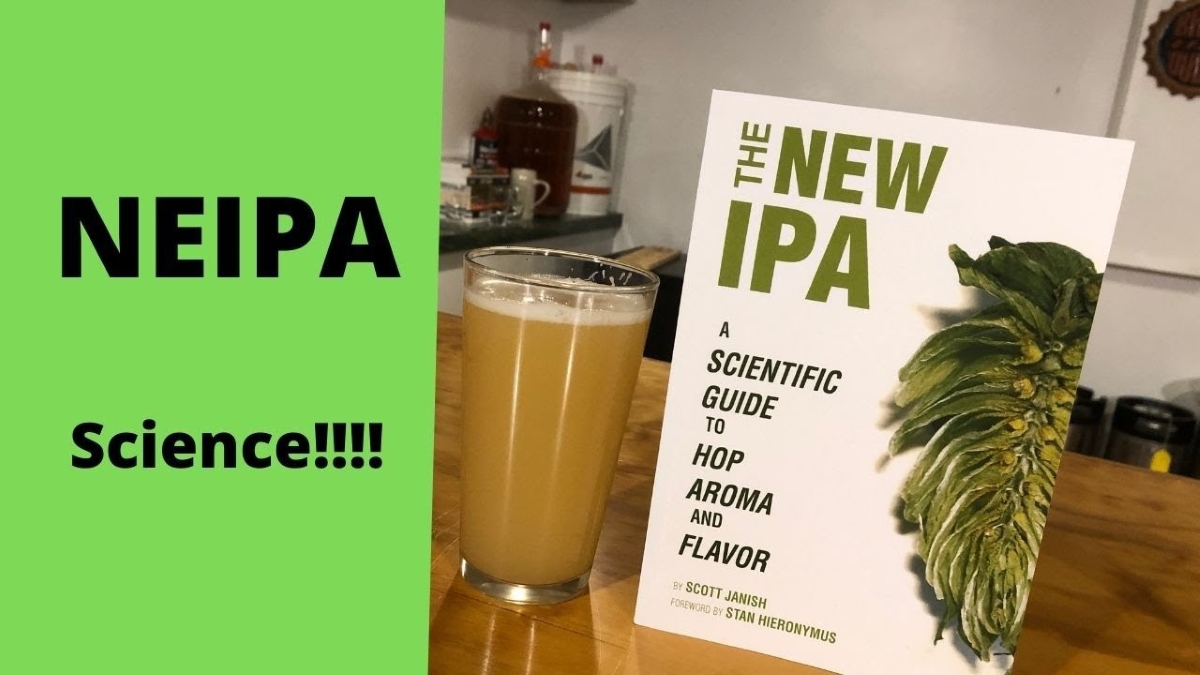When I see posts on social media related to NEIPAs, Scott Janish is often mentioned in the comments. He has put in a good amount of research in how hops interact together and understanding grain bills that set a nice foundation for all the intense hop aroma and flavor of this style.
When BYO published his recipe a couple of years ago, I held it aside and put it on the list of things to do for the “Dash”. Sometimes it takes 24 months to get around to brewing a beer, and that’s okay, especially over the past 14 months we have had. In this post, we present our review of the Scott Janish New England IPA.
Our Version Of The Recipe
As much as I wanted to hold true to the recipe, there were a few ingredients and processes that I didn’t follow. Here’s my version of the recipe:
Janish’s New England IPA – March-April 2019 Issue of BYO Magazine
5 gallons/19 L, All-grain
Ingredients
Grains
10 lbs. (4.5 kg) Great Western Full Pint malt
2.5 lbs. (1.13 kg) malted oats
2.5 lbs. (1.13 kg) Best Malz Chit malt
1.7 lbs. (0.77 kg) white wheat malt
Hops
1 oz. (28 g) Columbus hops (mash hop)
8.2 AAU Columbus hops (added at 60 minutes to go in the boil) (0.5oz./14 g at 15.5% alpha acids)
27.6 AAU Amarillo® hops (1st hop stand addition) (3 oz./84 g at 9.2% alpha acids)
31 AAU Bravo hops (2nd hop stand addition) (2 oz./56 g at 15.5% alpha acids)
2 oz. (56 g) Citra® hops (1st dry hop added at Day 4 of Fermentation)
2 oz. (56 g) Galaxy® hops (2nd dry hop added in the keg 3 days before we tasted it)
1 oz. (28 g) Citra® hops (2nd dry hop added in the keg 3 days before we tasted it)
Yeast
1 packet of Wyeast 1318 (London Ale III – smacked and swollen
OG = 1.070 FG = 1.018
IBU = 74 SRM = 4 ABV = 6.9%
Some Notes on The Janish NEIPA
This recipe had a more complex grain and hops bill from my own recipes so it was a good challenge to source the proper ingredients and follow the instructions as closely as I could. There were two ingredients that I did not buy because they were sold in quantities that made them cost prohibitive in my opinion for this recipe. I mean, I’m here for the Dash, but I do have my limits. Those ingredients were VIN 7 wine yeast and Rapidase Revelation. If you find them being sold in small quantities, let me know.
I also did add 1 tsp. of Irish moss at 15 minutes to go in the boil. I’m not sure why since we’re going for a hazy beer, but I added it because the recipe call for it.
What We Thought Of This Beer
I liked how this beer came together and how it delivered on the promises in the recipe. Even though the bill had grains I had never used before and had to buy outside of my main purchase, the color, the look, and the mouthfeel were awesome. Mike didn’t think the fullness of the beer helped its drinkability, which was a fair point.
The hop selection had many tried and true American varieties and more hops added at the beginning of the boil than I normally do. I did think the hops worked together well and it had a good level of complexity without seeming muddled. On this point, Mike agreed. He also thought it didn’t have that hop bite character that can be a big negative quality in these beers.
As a project, I was happy with the outcome. As a beer, was this a good representation of NEIPAs? I think it hit on some great notes. Compared to some of the beers we have available here in New England, it was different enough to have us feel like it was a slightly-off interpretation of the style.
Have you brewed this beer? If so, let us know what you think.
I brewed my own NEIPA and wrote up a comparison post.
BREW ON!

1 Pingback